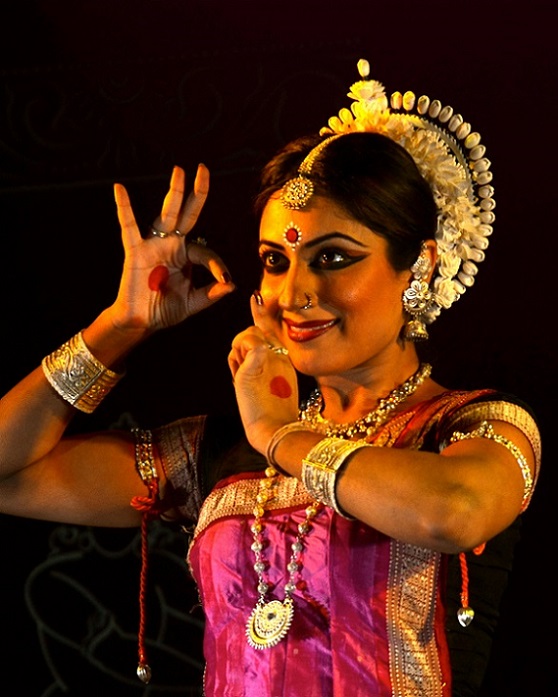It seems that for Shipra Mehrotra, a life in dance was always in the making. She began her training in Odissi, one of India’s eight classical dance forms, at an early age. In addition to learning Odissi at Washington D.C.’s Nrityalaya School of Classical Indian Dance, she studied ballet for ten years and modern for four. It was as an undergraduate at Northwestern University that she decided to pursue dance as a full-time career.
After college she traveled to Orissa, India to further her knowledge of Odissi at the renowned Orissa Dance Academy. And like all professional dancers, her training hasn’t stopped. “I consider myself a life-long student of Odissi, always in the pursuit of excellence,” says Shipra. “And so I return every other year to Orissa Dance Academy for additional training.”
Odissi is a rigorous form of dance that requires much physical discipline and mental exertion. “Odissi is actually a form of yoga, where both the body and mind have to work together to achieve a desired outcome,” she explains. “Simultaneously coordinating footwork, torso movement, hand gestures, eye and neck movement, and facial expressions in rhythm with music is physically challenging, and requires daily training and repetition to build muscle memory.”
Anyone who’s seen classical Indian dance is aware of the inherent beauty and elegance of its vocabulary, which is almost musical in its precise technicality. But not all classical Indian dance is the same. Each of the eight forms originates in a different geographic region of the Indian subcontinent, and as a result, each dance embodies the specific cultural signatures of its place of origin. For example, there’s a clear distinction between Odissi and Bharatanatyam. “Odissi, which originates from the state of Orissa, is aesthetically unique from other styles because of its stylized use of the torso, which creates sinuous undulations of the body and sculpture-esque, asymmetrical poses,” Shipra explains. “I always like to say if Bharatanatyam is characterized by sharp lines and angles, Odissi is about soft curves and circles.”
Shipra’s love of her art form can best be expressed in the relationship the dance forms of India have with its people. Dance is a reflection of its people’s values and ideals. “Artists, like scientists, must study and observe the world around them in order to articulate truths, whether they be objective or subjective. In the end, the expression of these truths, whether in science or art, helps us to understand ourselves and each other better.”
Original Article from Houston Press

